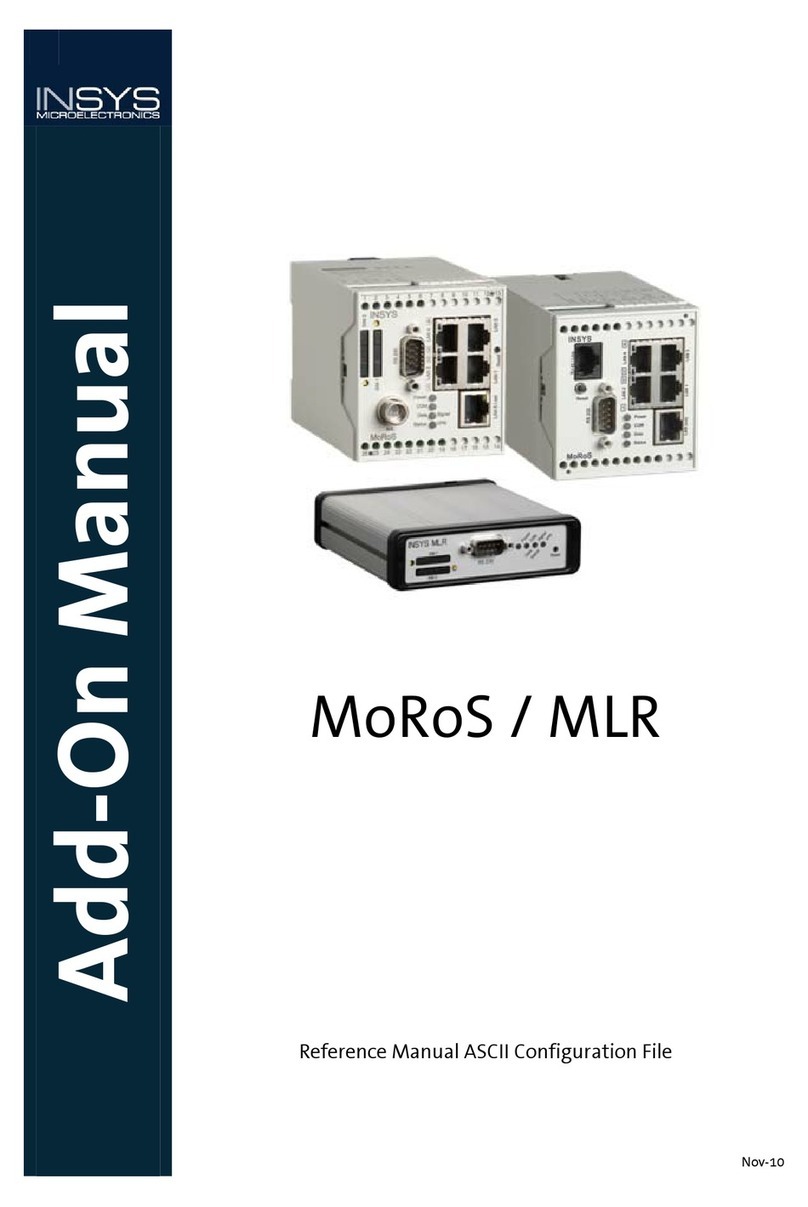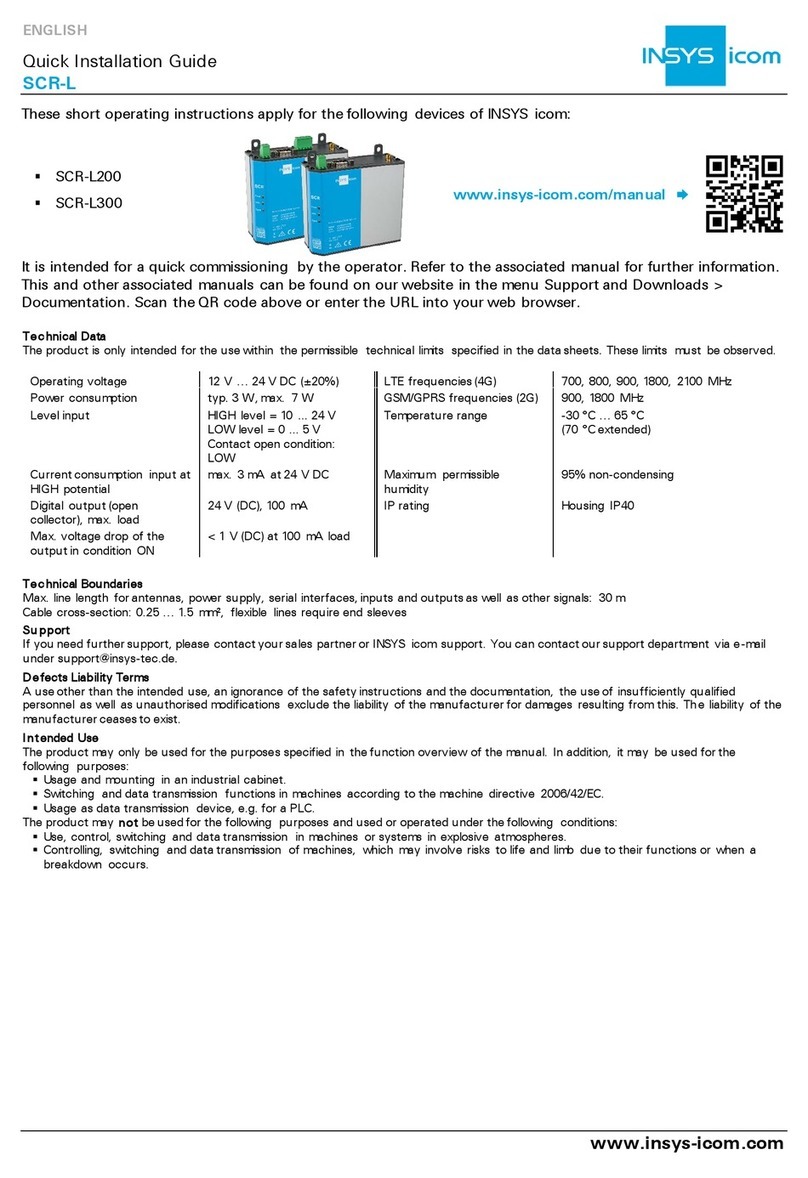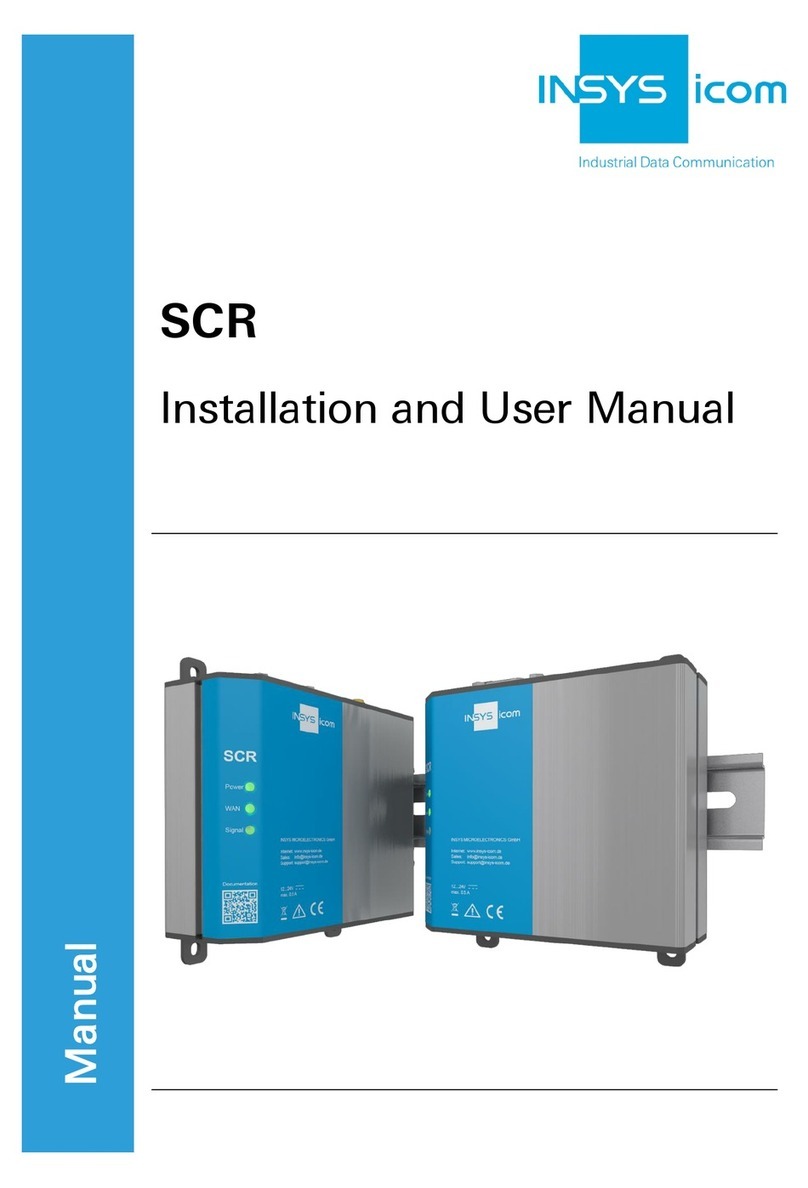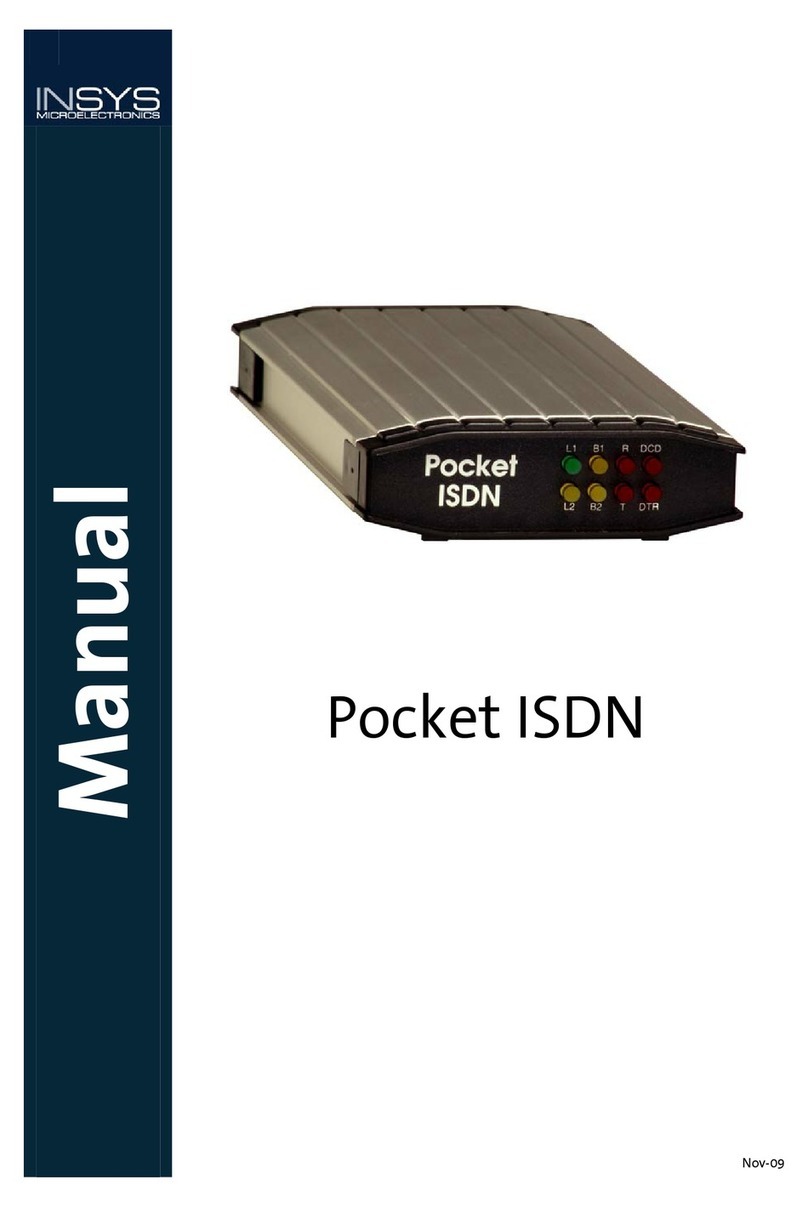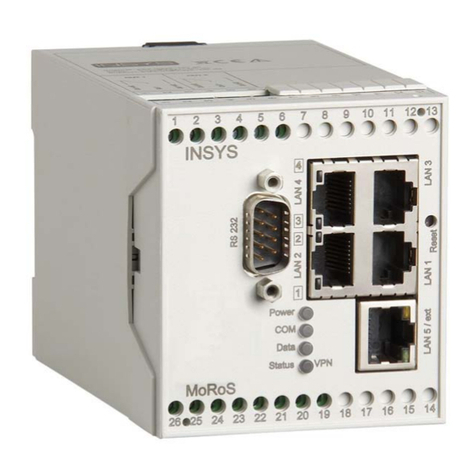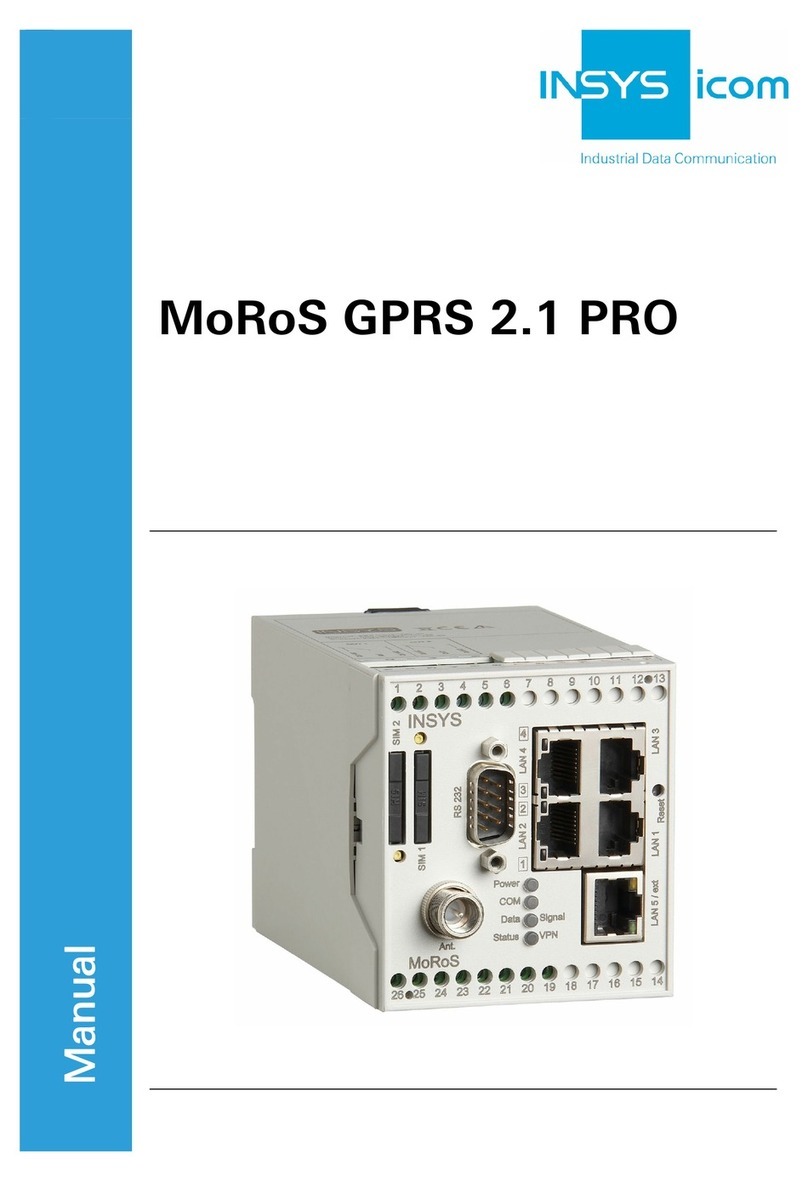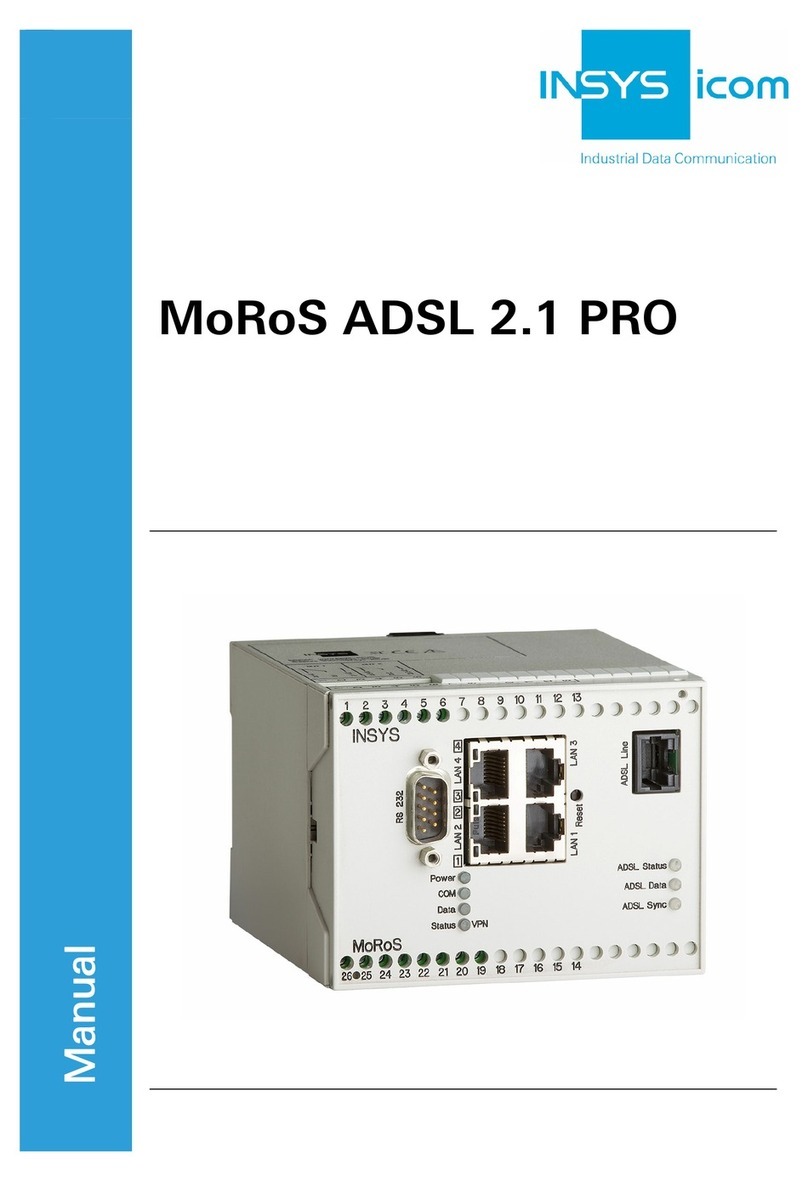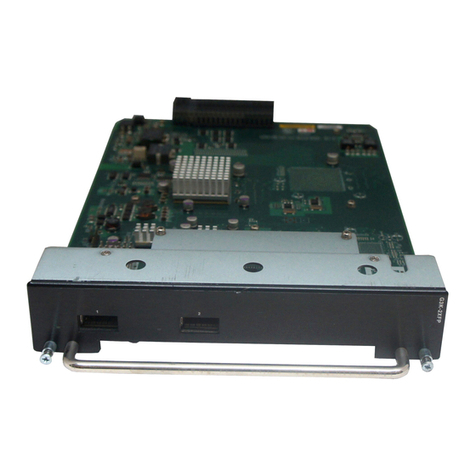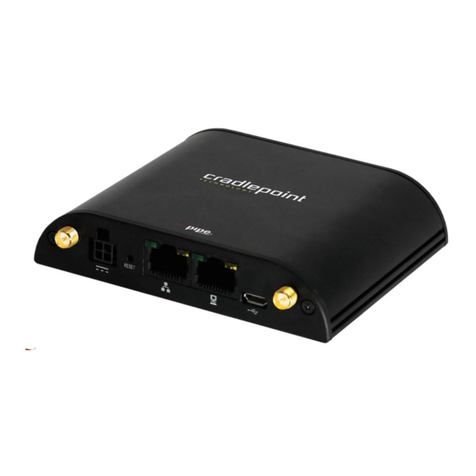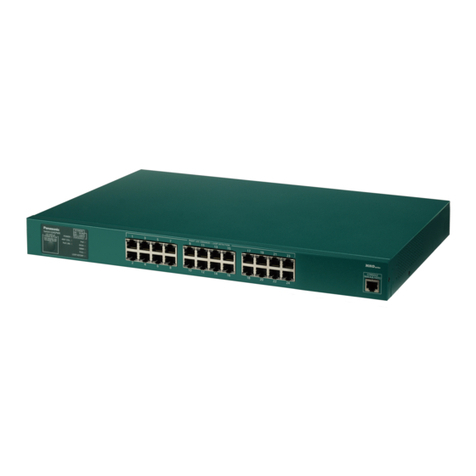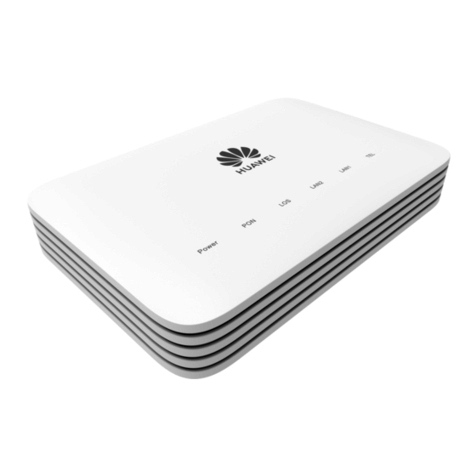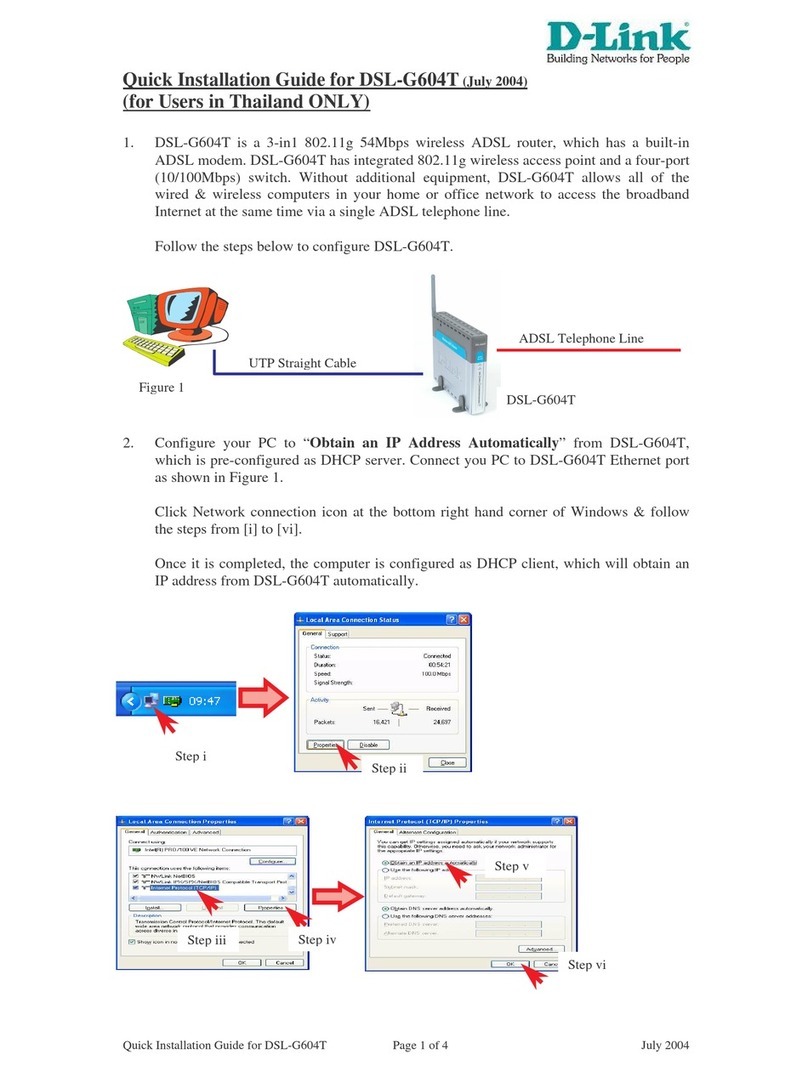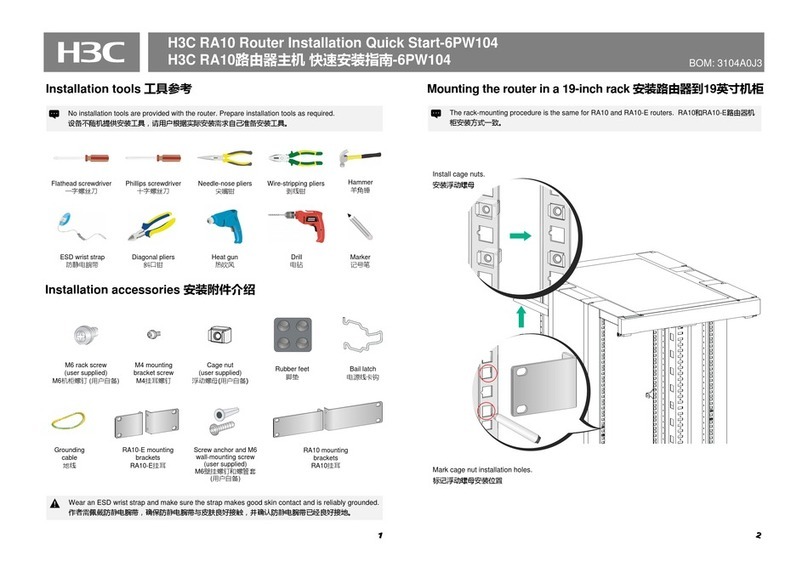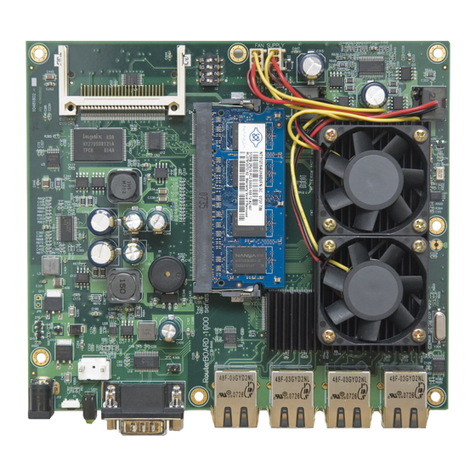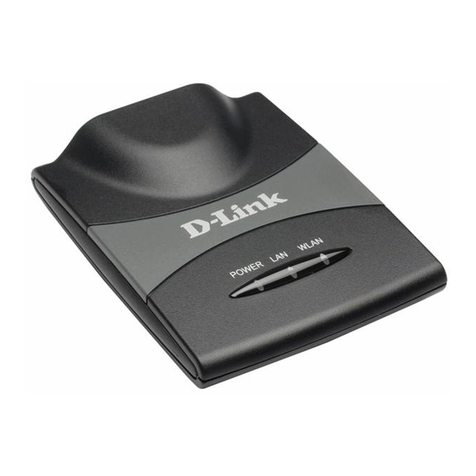INSYS MLR 3G 2.0 User manual

Manual
MLR 3G 2.0
Mar-11


Copyright © March 11 INSYS MICROELECTRONICS GmbH
Any duplication of this manual is prohibited. All rights on this documentation and the
devices are with INSYS MICROELECTRONICS GmbH Regensburg.
Trademarks
The use of a trademark not shown below is not an indication that it is freely available for
use.
MNP is a registered trademark of Microcom Inc.
IBM PC, AT, XT are registered trademarks of International Business Machine Corporation.
INSYS®, e-Mobility LSG® and e-Mobility PLC® are registered trademarks of INSYS
MICROELECTRONICS GmbH.
Windows™ is a registered trademark of Microsoft Corporation.
Linux is a registered trademark of Linus Torvalds.
Publisher:
INSYS MICROELECTRONICS GmbH
Waffnergasse 8
D-93047 Regensburg, Germany
Phone: +49 (0)941/56 00 61
Fax: +49 (0)941/56 34 71
E-mail: [email protected]
Internet: http://www.insys-tec.de
Date: Mar-11
Item: 31-22-03.173
Version: 1.0
Language: EN

Contents
1Safety .................................................................................................................. 7
1.1 Usage According to the Regulations..................................................................................7
1.2 Permissible Technical Limits...............................................................................................8
1.3 Defects Liability Terms .......................................................................................................8
1.4 Marking of Warnings and Notes ........................................................................................9
1.4.1 Symbols and Key Words ...................................................................................................9
1.5 Responsibilities of the Operator.......................................................................................10
1.6 Qualification of the Personnel .........................................................................................10
1.7 Instructions for Transport and Storage............................................................................10
1.8 Safety Instructions for Electrical Installation...................................................................10
1.9 General Safety Instructions..............................................................................................11
2Scope of Delivery .............................................................................................. 13
3Technical Data................................................................................................... 14
3.1 Physical Features ..............................................................................................................14
3.2 Technological Features.....................................................................................................15
4Display and Control Elements........................................................................... 16
4.1 Meaning of the Displays...................................................................................................18
4.2 Function of the Control Elements ....................................................................................19
5Connections....................................................................................................... 20
5.1 Front Panel Connections...................................................................................................20
5.2 Rear Panel Connections ....................................................................................................21
5.3 Pin Assignment of the Serial Interface.............................................................................21
6Function Overview............................................................................................ 22
7Meaning of the Symbols and the Formatting in this Manual.......................... 26
8Commissioning ................................................................................................. 27
9Operating Principle........................................................................................... 31
9.1 Operating the Web Interface ...........................................................................................31
9.2 Access via the HTTPS Protocol ..........................................................................................33
10 Functions........................................................................................................... 34
10.1 Basic Settings....................................................................................................................34
10.1.1 Web Interface (User Name, Password, Remote Configuration) ......................... 34
10.1.2 Setting IP Addresses ....................................................................................................... 35
10.1.3 Enter Static Route ........................................................................................................... 35
10.2 UMTS .................................................................................................................................36
10.2.1 Enter SIM card PIN .......................................................................................................... 36
10.2.2 Configure Network Selection....................................................................................... 37
10.2.3 Configure Daily Login and Logout .............................................................................. 38
10.2.4 Terminal............................................................................................................................. 38
4Mar-11

Contents
10.3 Dial-In................................................................................................................................39
10.3.1 Configuring Dial-In ......................................................................................................... 39
10.3.2 Automatic Callback (Callback)..................................................................................... 40
10.3.3 Routing............................................................................................................................... 40
10.3.4 Creating or Deleting a Firewall Rule .......................................................................... 41
10.4 Dial-Out.............................................................................................................................42
10.4.1 Configure Dial-Out.......................................................................................................... 42
10.4.2 Configure Leased Line Operation................................................................................ 43
10.4.3 Configuring a Periodical Dial-Out Connection Setup............................................ 44
10.4.4 Routing............................................................................................................................... 44
10.4.5 Configuring a Talking Filter.......................................................................................... 45
10.4.6 Creating or Deleting a Firewall Rule .......................................................................... 46
10.4.7 Creating a Port Forwarding Rule................................................................................. 46
10.4.8 Defining the Exposed Host ........................................................................................... 47
10.5 VPN....................................................................................................................................48
10.5.1 VPN General...................................................................................................................... 48
10.5.2 OpenVPN General ........................................................................................................... 48
10.5.3 OpenVPN Server Basic Settings................................................................................... 49
10.5.4 OpenVPN Client Basic Settings.................................................................................... 52
10.5.5 PPTP General..................................................................................................................... 55
10.5.6 PPTP Server Basic Settings ............................................................................................ 55
10.5.7 PPTP Client Basic Settings............................................................................................. 56
10.5.8 IPsec .................................................................................................................................... 57
10.6 Redundant Communication Device .................................................................................60
10.6.1 Configure Redundant Communication Device ....................................................... 60
10.7 Configurable Switch .........................................................................................................61
10.7.1 Querying Configuration and Status of the Switch Ports...................................... 61
10.7.2 Configuring Switch Ports .............................................................................................. 61
10.7.3 Configuring the LED Display of the Switch Ports.................................................... 62
10.7.4 Configuring VLAN............................................................................................................ 62
10.7.5 Configuring Port Mirroring........................................................................................... 63
10.8 Serial Ethernet gateway ...................................................................................................64
10.8.1 Setting up the Serial Ethernet Gateway ................................................................... 64
10.8.2 Configuring the Serial Ethernet Gateway ................................................................ 66
10.8.3 Modem Emulator ............................................................................................................ 67
10.9 Messages...........................................................................................................................69
10.9.1 Configuring the Message Dispatch............................................................................ 69
10.9.2 Enable SMS Receipt......................................................................................................... 70
10.9.3 Configuring E-Mail Dispatch........................................................................................ 72
10.9.4 Configure SMS Dispatch................................................................................................ 73
10.9.5 Configuring SNMP Trap Triggering ............................................................................ 74
10.10 Server Services ..................................................................................................................75
10.10.1 Setting up DNS Forwarding.......................................................................................... 75
10.10.2 Setting up the Dynamic DNS Update ........................................................................ 75
10.10.3 Setting up the DHCP Server.......................................................................................... 76
10.10.4 Configuring the Proxy Server....................................................................................... 77
10.10.5 Configuring an URL Filter.............................................................................................. 78
10.10.6 Configuring IPT ................................................................................................................ 79
10.10.7 Configuring the SNMP Agent....................................................................................... 80
Mar-11 5

Contents
6Mar-11
10.11 System Configuration.......................................................................................................81
10.11.1 Displaying the System Log............................................................................................ 81
10.11.2 Displaying the Last System Messages ....................................................................... 81
10.11.3 Configuring Time and Time Zone ............................................................................... 82
10.11.4 Resetting the Device....................................................................................................... 83
10.11.5 Update................................................................................................................................ 84
10.11.6 Updating the Firmware ................................................................................................. 85
10.11.7 Uploading the Configuration File ............................................................................... 87
10.11.8 Download.......................................................................................................................... 88
10.11.9 Sandbox............................................................................................................................. 89
10.11.10 Debugging......................................................................................................................... 90
11 Waste Disposal.................................................................................................. 91
11.1 Repurchasing of Legacy Systems......................................................................................91
12 Declaration of Conformity................................................................................ 92
13 Export Regulation ............................................................................................. 93
14 Licenses ............................................................................................................. 94
14.1 GNU GENERAL PUBLIC LICENSE.........................................................................................94
14.2 GNU LIBRARY GENERAL PUBLIC LICENSE ..........................................................................97
14.3 Other Licenses.................................................................................................................102
15 International Safety Instructions ................................................................... 104
15.1 Safety Precautions ..........................................................................................................104
16 Glossary........................................................................................................... 106
17 Tables and Diagrams....................................................................................... 109
17.1 List of Tables ...................................................................................................................109
17.2 List of Diagrams ..............................................................................................................109
18 Index................................................................................................................ 110

MLR 3G 2.0 Safety
1Safety
The Safety section provides an overview about the safety instructions, which must be
observed for the operation of the product.
The product is constructed according to the currently valid state-of-the-art technology
and reliable in operation. It has been checked and left the factory in flawless condition
concerning safety. In order to maintain this condition during the service life, the instruc-
tions of the valid publications and certificates must be observed and followed.
It is necessary to adhere to the general safety instructions must when operating the
product. The descriptions of processes and operation procedures are provided with pre-
cise safety instructions in the respective sections in addition to the general safety in-
structions.
An optimum protection of the personnel and the environment from hazards as well as a
safe and fault-free operation of the product is only possible if all safety instructions are
observed.
1.1 Usage According to the Regulations
The product may only be used for the purposes specified in the function overview. In ad-
dition, it may be used for the following purposes:
Data transmission functions in machines according to the machine direc-
tive 2006/42/EC.
Usage as data transmission device for a PLC or a usual PC.
The product may not be used for the following purposes and used or operated under the
following conditions:
Controlling or switching of machines and systems, which do not comply
with the directive 2006/42/EC.
Usage, controlling, switching and data transmission of machines and sys-
tems, which are operated in explosive atmospheres.
Controlling, switching and data transmission of machines, which may in-
volve risks to life and limb due to their functions or when a breakdown oc-
curs.
7

Safety MLR 3G 2.0
1.2 Permissible Technical Limits
The product is only intended for the use within the permissible technical limits specified
in the data sheets.
The following permissible limits must be observed:
The ambient temperature limits must not be fallen below or exceeded.
The supply voltage range must not be fallen below or exceeded.
The maximum humidity must not be exceeded and condensate formation
must be prevented.
The maximum switching voltage and the maximum switching current
load must not be exceeded.
The maximum input voltage and the maximum input current must not be
exceeded.
1.3 Defects Liability Terms
A usage not according to the intended purpose, an ignorance of this documentation, the
use of insufficiently qualified personnel as well as unauthorised modifications exclude
the liability of the manufacturer for damages resulting from this. The liability of the ma-
nufacturer ceases to exist.
8

MLR 3G 2.0 Safety
1.4 Marking of Warnings and Notes
1.4.1 Symbols and Key Words
Danger!
Risk of severe or fatal injury
One of these symbols in conjunction with the key word Danger
indicates an imminent danger. It will cause death or severe in-
juries if not avoided.
Warning!
Personal injury
This symbol in conjunction with the key word Warning indi-
cates a possibly hazardous situation. It might cause death or
severe injuries if not avoided.
Caution!
Slight injury and / or material damage
This symbol in conjunction with the key word Caution indicates
a possibly hazardous or harmful situation. It might cause slight
or minor injuries or a damage of the product or something in its
vicinity if not avoided.
Note
Improvement of the application
This symbol in conjunction with the key word Note indicates
hints for the user or very useful information. This information
helps with installation, set-up and operation of the product to
ensure a fault-free operation.
9

Safety MLR 3G 2.0
1.5 Responsibilities of the Operator
As a matter of principle, the operator must observe the legal regulations, which are valid
in his country, concerning operation, functional test, repair and maintenance of electrical
devices.
1.6 Qualification of the Personnel
The installation, commissioning and maintenance of the product must only be per-
formed by trained expert personnel, which has been authorised by the plant operator.
The expert personnel must have read and understood this documentation and observe
the instructions.
1.7 Instructions for Transport and Storage
The following instructions must be observed:
Do not expose the product to moisture and other potential hazardous en-
vironmental conditions (radiation, gases, etc.) during transport and stor-
age. Pack product accordingly.
Pack product sufficiently to protect it against shocks during transport and
storage, e.g. using air-cushioned packing material.
Check product for possible damages, which might have been caused by improper trans-
port, before installation. Transport damages must be noted down to the shipping docu-
ments. All claims or damages must be filed immediately and before installation against
the carrier or party responsible for the storage.
1.8 Safety Instructions for Electrical Installation
The electrical connection must only be made by authorised expert personnel according
to the wiring diagrams.
The notes to the electrical connection in the manual must be observed. Otherwise, the
protection category might be affected.
The safe disconnection of circuits, which are hazardous when touched, is only ensured if
the connected devices meet the requirements of VDE T.101 (Basic requirements for safe
disconnection).
The supply lines are to be routed apart from circuits, which are hazardous when touched,
or isolated additionally for a safe disconnection.
10

MLR 3G 2.0 Safety
1.9 General Safety Instructions
Caution!
Moisture and liquids from the environment may seep into the
interior of the product!
Fire hazard and damage of the product.
The product must not be used in wet or damp environments, or
in the direct vicinity of water. Install the product at a dry loca-
tion, protected from water spray. Disconnect the power supply
before you perform any work on a device which may have been
in contact with moisture.
Caution!
Short circuits and damage due to improper repairs and opening
of maintenance areas.
Fire hazard and damage of the product.
Only persons, which have the training or skills of an "Electronic
technician for industrial engineering", are authorised to open
and repair the product.
Caution!
Overcurrent of the device supply!
Fire hazard and damage of the product due to overcurrent.
The product must be secured with a suitable fuse against cur-
rents exceeding 1.6 A.
Caution!
Overvoltage and voltage peaks from the mains supply!
Fire hazard and damage of the product due to overvoltage.
Install suitable overvoltage protection.
Caution!
Damage due to chemicals!
Ketones and chlorinated hydrocarbons dissolve the plastic hou-
sing and damage the surface of the device.
Never let the device come into contact with ketones (e.g. ace-
tone) or chlorinated hydrocarbons, such as dichloromethane.
11

Safety MLR 3G 2.0
Caution!
Distance from antennas to persons!
A too low distance from GSM antennas to persons can affect
the health.
Please observe to keep a minimum distance of 20 cm between
the GSM antenna and persons during operation.
Note
Export restriction for FCC!
Possible offence against approval regulations.
If the final product is not approved in the U.S. territories, the
application manufacturer shall take care that the 850 MHz and
190 MHz frequency bands be deactivated and that band set-
tings be inaccessible to end users. If these demands are not met
(e.g. if the AT interface is accessible to end users), it is the re-
sponsibility of the application manufacturer to always ensure
that the application be not exported to countries within the
area of validity of the FCC.
12

MLR 3G 2.0 Scope of Delivery
2Scope of Delivery
The scope of delivery for the MLR 3G 2.0 includes all accessories listed below. Please
check if all accessories are included in the box. If a part is missing or damaged, please
contact your distributor.
1 MLR 3G 2.0
1 Quick Installation Guide
1 Support CD with operator manual in PDF format
1 Power supply connector
GSM/UMTS antenna
The following related documents for the MLR 3G 2.0 can be found on the delivered Sup-
port CD or in the download area and on the product page of the MLR 3G 2.0 under
www.insys-tec.de:
• Add-On Manual ASCII Configuration File
• Add-On Manual Automatic Update
13

Technical Data MLR 3G 2.0
3Technical Data
3.1 Physical Features
All specified data was measured with nominal input voltage, at full load, and an ambient
temperature of 25 °C. The limit value tolerances are subject to the usual variations.
Physical Feature Value
Operating voltage 12 V – 24 V DC (+20%/-15%)
Power consumption idle approx. 3 W
Power consumption connection approx. 6.5 W
Transmitted output:
UMTS 850: Class 3
UMTS 1900: Class 3
UMTS 2100: Class 3
EGSM 850 and 900: Class 4
EGSM 1800 and 1900: Class 1
EGSM 850 and 900: Class E2
GSM 1800 and 1900: Class E2
0.25 W
0.25 W
0.25 W
2 W
1 W
0.5 W
0.5 W
Weight 300 g
Dimensions (Width x Depth x Height) 115 mm x 120 mm x 37 mm
Temperature range -20 °C – 55 °C
Maximum permissible humidity 95% non-condensing
IP rating Housing IP40
Table 1: Physical Features
14

MLR 3G 2.0 Technical Data
3.2 Technological Features
Technological Feature: Description
GSM frequencies (2G) 850, 900, 1800, 1900 MHz
UMTS frequencies (3G) 850, 1900, 2100 MHz
SIM card reader Support for 1.8 V and 3.3 V SIM cards
SMS SMS dispatch; incoming SMS can be received, but
cannot be accessed via the web interface.
CSD Up to 14.4 kBit/s
GPRS GPRS Multislot Class 12, Coding scheme 1 bis 4,
PBCCH, Mobile Station Class B
EDGE (EGPRS) EDGE Multislot Class 10, Modulation and Coding
Scheme MCS 1-9
UMTS Uplink up to 384 kBit/s / downlink up to 384 kBit/s
HSUPA (uplink) up to 5,7 MBit/s
HSDPA (downlink) up to 14,4 MBit/s
Table 2: Technological Features
15

Display and Control Elements MLR 3G 2.0
4Display and Control Elements
Figure 1: LEDs and control elements on the front of the device
Position Description
1 Power LED
2 COM LED
3 Data/Signal LED
4 Status/VPN LED
6 SIM card 2 - eject button
7 SIM card 2 - card holder
8 SIM card 1 - card holder
9 SIM card 1 - eject button
Table 3: Description of the LEDs and control elements on the front of the device
16

MLR 3G 2.0 Display and Control Elements
Figure 2: LEDs on the rear of the device
Position Description
1 Link LED for Switch LAN 1
2 Link LED for Switch LAN 2
3 Link LED for Switch LAN 3
4 Link LED for Switch LAN 4
5 Activity LED for Switch LAN 4
6 Activity LED for Switch LAN 3
7 Activity LED for Switch LAN 2
8 Activity LED for Switch LAN 1
Table 4: Description of the LEDs on the rear of the device
17

Display and Control Elements MLR 3G 2.0
4.1 Meaning of the Displays
LED Colour Function off flashing
blinking on
yellow Link 10 Mbit/s
Switch
LAN 1-4 green Link 100 Mbit/s
Data traf-
fic connected
Power green Supply missing present
green Connect
COM
orange
PPP link
offline established
green SIM card 1
Data /
Signal orange
SIM card 2
no signal
or logged
out
PPP
data
traffic
Field
strength
(see Table
6)
green VPN
Client or
server estab-
lished
Status /
VPN
red Status
Initialization,
FW update,
fault
Table 5: Meaning of the LED displays
Blinking interval LED sig-
nal
Quality Signal quality
900 ms on, 100 ms off 20 .. 32 very good
200 ms on, 200 ms off 13 .. 19 good
100 ms on, 900 ms off 0 .. 12 poor
off 99 (not detectable) insufficient
Table 6: Blinking code of the data/signal LED
18

MLR 3G 2.0 Display and Control Elements
4.2 Function of the Control Elements
Description Operation Meaning
Press once for a short time. Resets the MLR 3G 2.0 via
software and restarts it.
(Soft reset)
Press at least 3 seconds. Resets the hardware and
restarts the MLR 3G 2.0.
(Hard reset)
Reset key
Press three times for a short
time within 2 seconds.
Deletes all settings of the
MLR 3G 2.0 and resets the
device to the factory de-
faults.
SIM card eject button Press with a pointed object Ejects the SIM card holder.
Table 7: Description of the functions and meaning of the control elements
19

Connections MLR 3G 2.0
5Connections
5.1 Front Panel Connections
Figure 3: Connections on the front panel of the device
Position Description
1 Serial interface (RS232 socket V.24/V.28)
Table 8: Description of the connections on the front panel of the device
20
Table of contents
Other INSYS Network Router manuals
Popular Network Router manuals by other brands

Eco House Comfort
Eco House Comfort FHZ1000 Installation and user guide
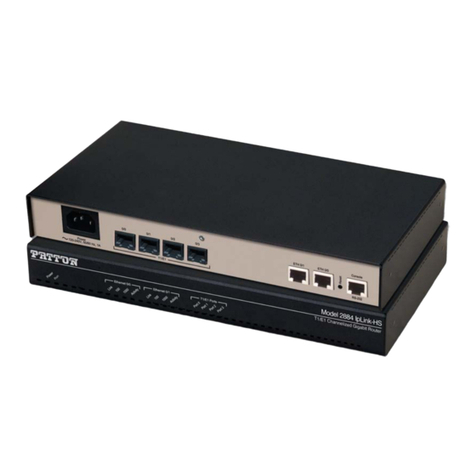
Patton electronics
Patton electronics IpLink 2884 Getting started guide
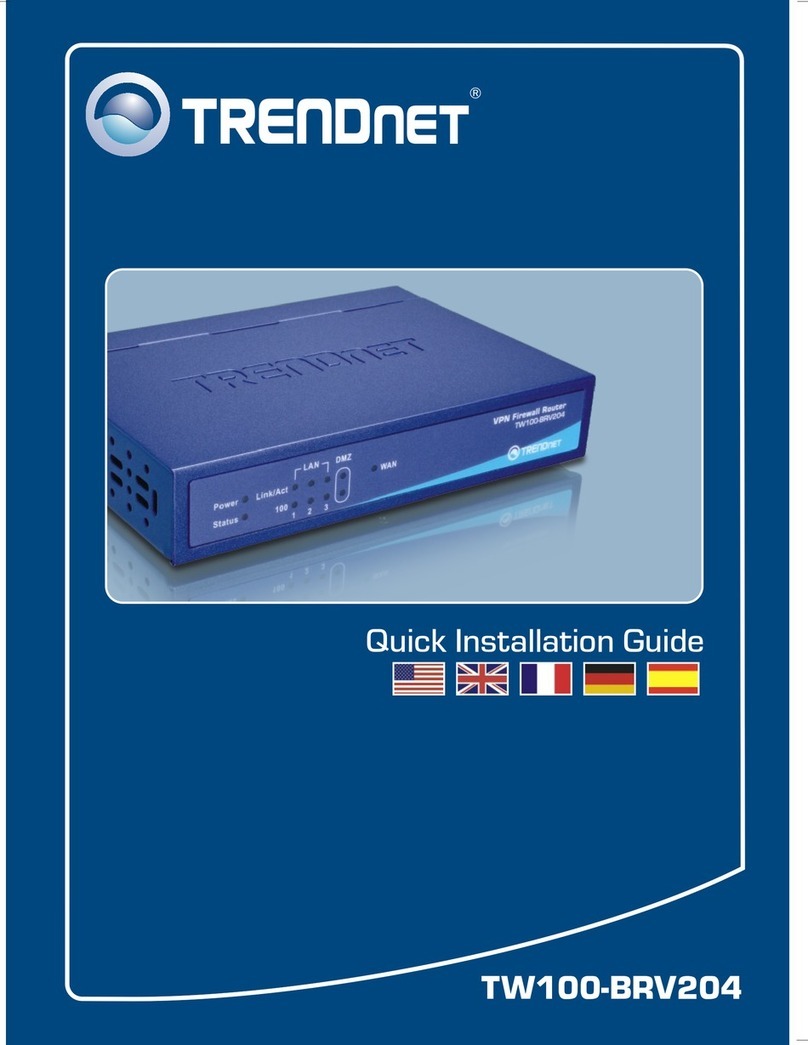
TRENDnet
TRENDnet TW100-BRV204 SHEETS Quick installation guide
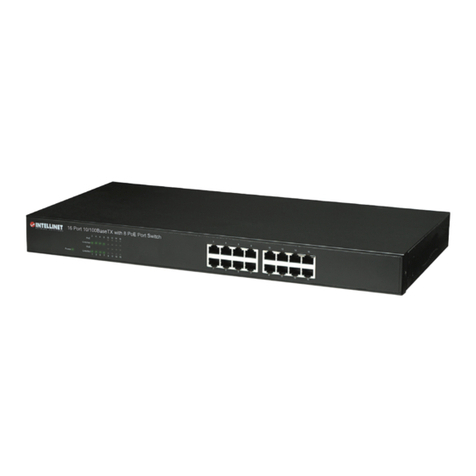
Intellinet
Intellinet 560405 user manual
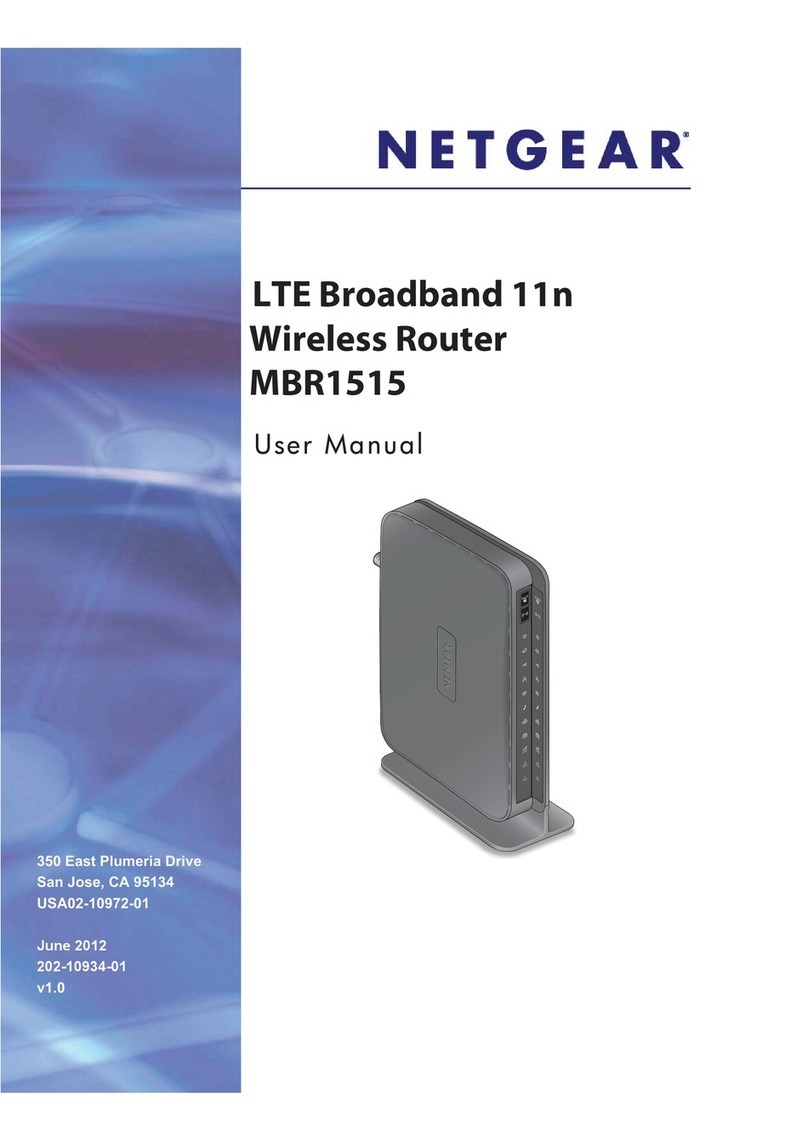
NETGEAR
NETGEAR MBR1515 user manual
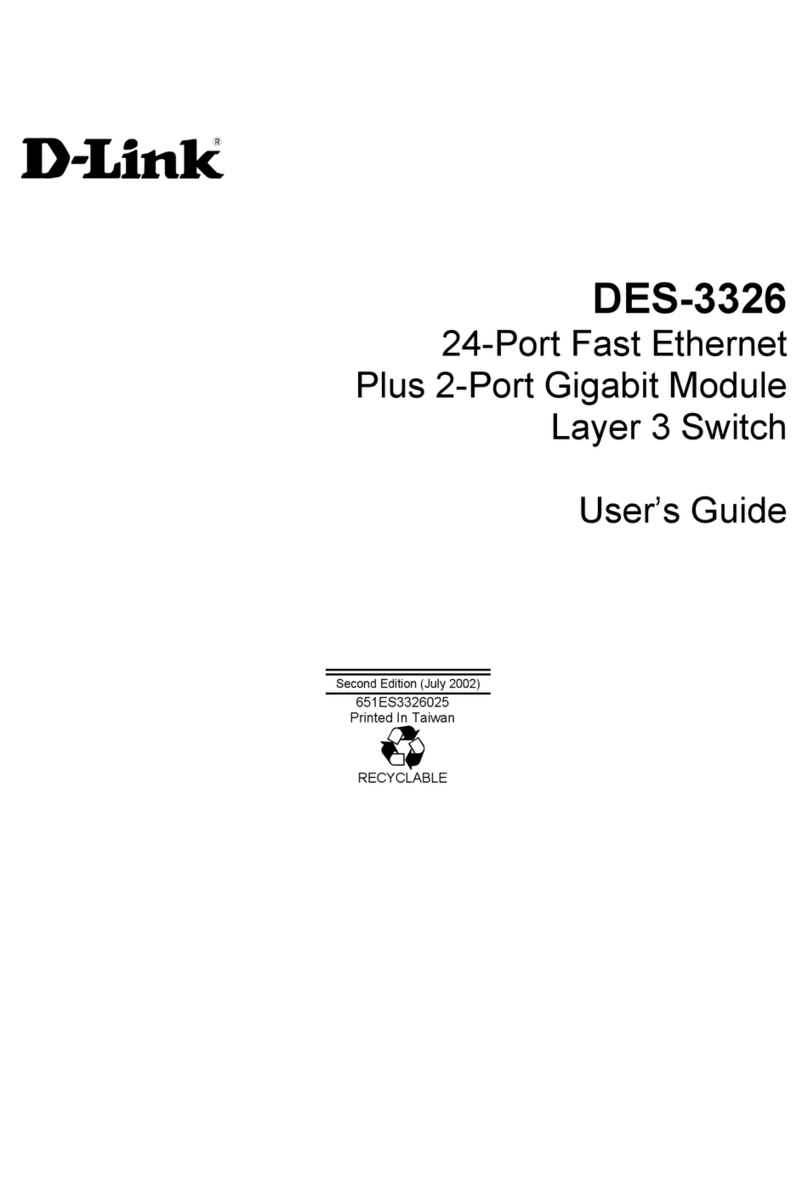
D-Link
D-Link DES-3326 user guide
